Early on in a 7-day class taught by Cody Lundin, myself and two other fellas learned for the first time how to split a paper match. My initial thought was this is a “just in case” solution should a resource become limited, i.e., two fires from one match. Little did we know there was much more to practicing this skill, OR, that later that week we would be tested under trying conditions.
When the test did come, Cody approached me and other two students on a late afternoon. With the delivery skills of an Academy Award Winner, Cody said we were stranded and had to the spend the night out, but he did find some paper matches (we’re saved), handing us each a book with a Cheshire grin. The caveat to this exercise was each book had one match to use (oh crap!). Furthermore he added, if we didn’t get a fire, we were going to freeze out here!
In addition to that little bit of stress, the here happened to be at a chilly 8,000 feet in the San Fransisco Mountains north of Flagstaff, Arizona. Again, it was late afternoon… and raining!
With no knife to aid in fire prep, after building my fire lay and drying out my kindling in my pocket, the inner-bark from a dead aspen, I split my paper match so as to give myself two opportunities to make a fire. Immediately after striking my first half of a half-match… it quickly flared out — over 10 years later, I think I can still feel the look of disbelief on my face.
I was down to my last half of a paper match. With the patience of a saint, I waited in the drizzle on my stomach for the opportune moment when the wind was at it’s lowest and struck. As if it were more fragile than a baby bird just coming out of its egg, I moved that tiny flame under the firelay cupped in both hands praying to the fire gods to let my baby grow. After several tense moments and just the right amount of breath to conjure more fire, I succeeded, as did my two peers, in not just starting a fire under these trying conditions, but just as important, maintaining. Kudos to good instructors everywhere.
As an aside, while Cody was pushing and testing us in the backcountry, the thought of really being stuck out there did cross my mind, and it would have yours too if you knew how we got up to that elevation, i.e., his ‘antique’ red Suburban. To get up the last stretch required going in reverse for it’s lower gear. Low range going forward wasn’t low enough to make the climb, trust me, we tried. Should you go on one of his courses today, which I highly recommend, be rest assured he has since upgraded his ride!
While there were multiple lessons happening in Cody’s class at the same time with this exercise, simply put, a split paper match is a great training aid…
If you can light a fire in the rain and wind with a split paper match
you are proving to yourself you are a very skilled fire lighter.
Mors Kochanski, 2015, Grand Syllabus Instructor Trainee Program
A standard kitchen or strike-anywhere match burned entirely through is equal to one BTU, the amount of heat required to raise one pint of water 1°F. In no wind, a kitchen match will also burn almost 30 seconds. Obviously, a paper match is a fraction of that and a split paper match even less.
Another difference, should you become proficient with a kitchen match, you will learn quickly that you can take advantage of the chemical reaction at ignition. During that initial flare-up with a large match, if you move quickly to the target area you are lighting, the wind will not put the match out. Paper matches, especially split, don’t offer that luxury. It will force you, or at least it does me, to learn how to protect that small flame, yet quickly get it to your target as the burn time is so short.
“THE IMPORTANCE OF PRACTICE: Carrying matches in not enough. Their use must be mastered through considerable practice. There is no magical way to gain proficiency in fire lighting. There are suggested minimum standards that one might strive to achieve in the training or learning process. Under normal circumstances one should be able to gather the necessary materials and get a fire going with flames reaching their own height in five to ten minutes time. First master your lighting skills with wooden (kitchen) matches, then paper matches and finally paper matches split in half…”
— Mors Kochanski, 2013, Basic Safe Travel and Boreal Survival Handbook
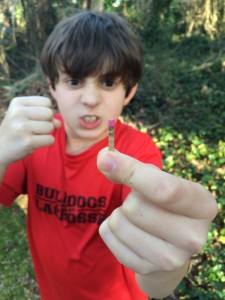 For years I have pushed my son Duncan, now 12, with matches of all kinds. Strike-anywhere, stormproof, strike-on-box, paper, and in just the last few months, split paper matches. You can see what he thinks of it to the right. Nonetheless, the kid is good and through me pushing him, Duncan can get a fire where I have seen many adults struggle. The importance of practice can’t be overstated. Using paper matches is a good way to get there.
For years I have pushed my son Duncan, now 12, with matches of all kinds. Strike-anywhere, stormproof, strike-on-box, paper, and in just the last few months, split paper matches. You can see what he thinks of it to the right. Nonetheless, the kid is good and through me pushing him, Duncan can get a fire where I have seen many adults struggle. The importance of practice can’t be overstated. Using paper matches is a good way to get there.
“Tell me and I forget, teach me and I may remember, involve me and I learn.”
— Xunzi, Chinese Philospher, 312-230 BC
(interpretation of Xunzi’s quote often attributed to Ben Franklin)
One last thing to note when it comes to learning… Lessons even from decades past I remember like yesterday where I was a participant, especially if it was in the field.
This article only told you my story of a lesson, the context of why, and as you will learn below, how to split and light a paper match. Like the recent online blurb you read or YouTube video you watched, if you didn’t go outside and actually practice, you most likely just forgot about it, even if it did have context which most don’t!
Can you remember what your read or watched last week; how about last month or even last year? If you didn’t practice it, probably not. Like me, I bet you remember that lesson you received many years ago because you were involved in an experience with a good instructor. I hope this encourages you to train outside… and play with matches!
SPLITTING and LIGHTING PAPER MATCHES
As is obvious, not all wooden matches are created equal. Well, the same holds true for paper matches. The MRE paper matches with a green cover are some of the best I have used, and for that, I actually avoid them when practicing. I prefer to save those for later anyway. While harder to find than they used to be, many a local bar still have matchbooks and offers you a good excuse to visit — I am here for the matches, really. Sometime ago I did buy a box of 50 matchbooks off Amazon for less than $5. Being middle of the road in quality, they’ve been great practice for me and Duncan.
When you go to split a paper match, you will start at the end away from the match head by using your finger nail to pull apart the paper stick (see pics or video below). Some matches (not all) will appear to have pressed layers of paper which you may have to move though until you get half-way. Slowly pull the paper portion of the match apart moving your fingers down as you go. Moving your fingers to the area you are splitting is especially important when you get to the match head. Sometimes I will get it to split perfectly, but more times than not it becomes a 60/40 split on the stick and match head, especially cheap matches.
https://youtu.be/AvgB4nqWJnM
I always light the smaller 40% piece first for several reasons. One, I rather save my best odds for last. Two, it is a confidence booster to do more with less. And finally, should I not get fire with the first half, I will have learned something in the process such as the wind was too much, kindling too wet, or I forgot I was using a paper match and I tried to light during the flare-up — now I have a chance to correct.
For more about matches and wilderness fire lighting than you will learn online, check out 98.6 Degrees; The Art of Keeping Your Alive by Cody Lundin as well as the books and especially DVDs dedicated to fire by Mors Kochanski from Karamat Wilderness Ways.



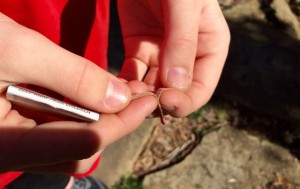
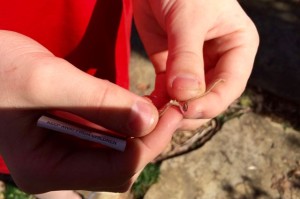
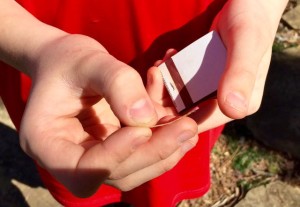

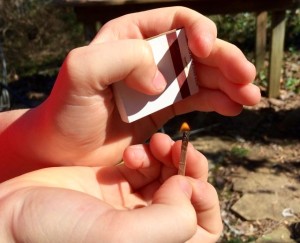
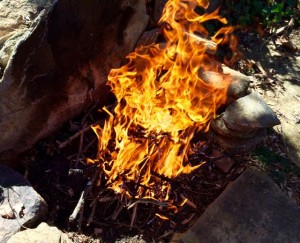
5 Responses to Homage to the Split Paper Match